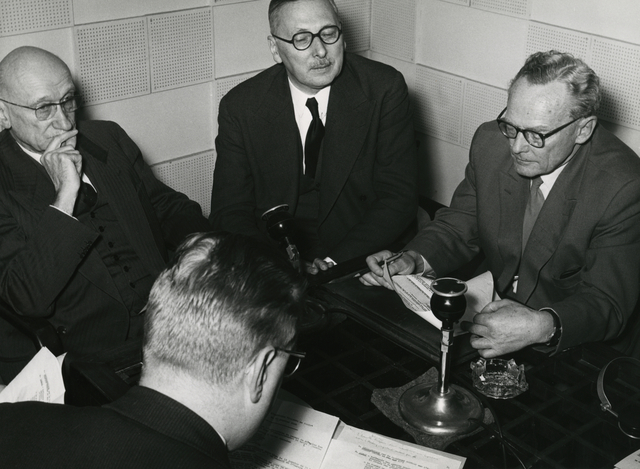Jean Monnet, the architect of the European Union, linked his political future to the creation of a pan-European military force: before the ‘strategic autonomy’ mantra, there were a proposal, an agreement and a Treaty signed by the ‘inner six’ (27 May 1952). This is the story of the “European army”, a dream that could have been reality.
The first European Army
The planned European Defense Community (EDC) would have entailed a pan-European military: the Treaty of Paris establishing the EDC, signed in May 1952 (yes, there have been a hundred more treaties signed in Paris), established a EU co-force with a shared budget, common arms, centralized military procurement and #EUdefence institutions.
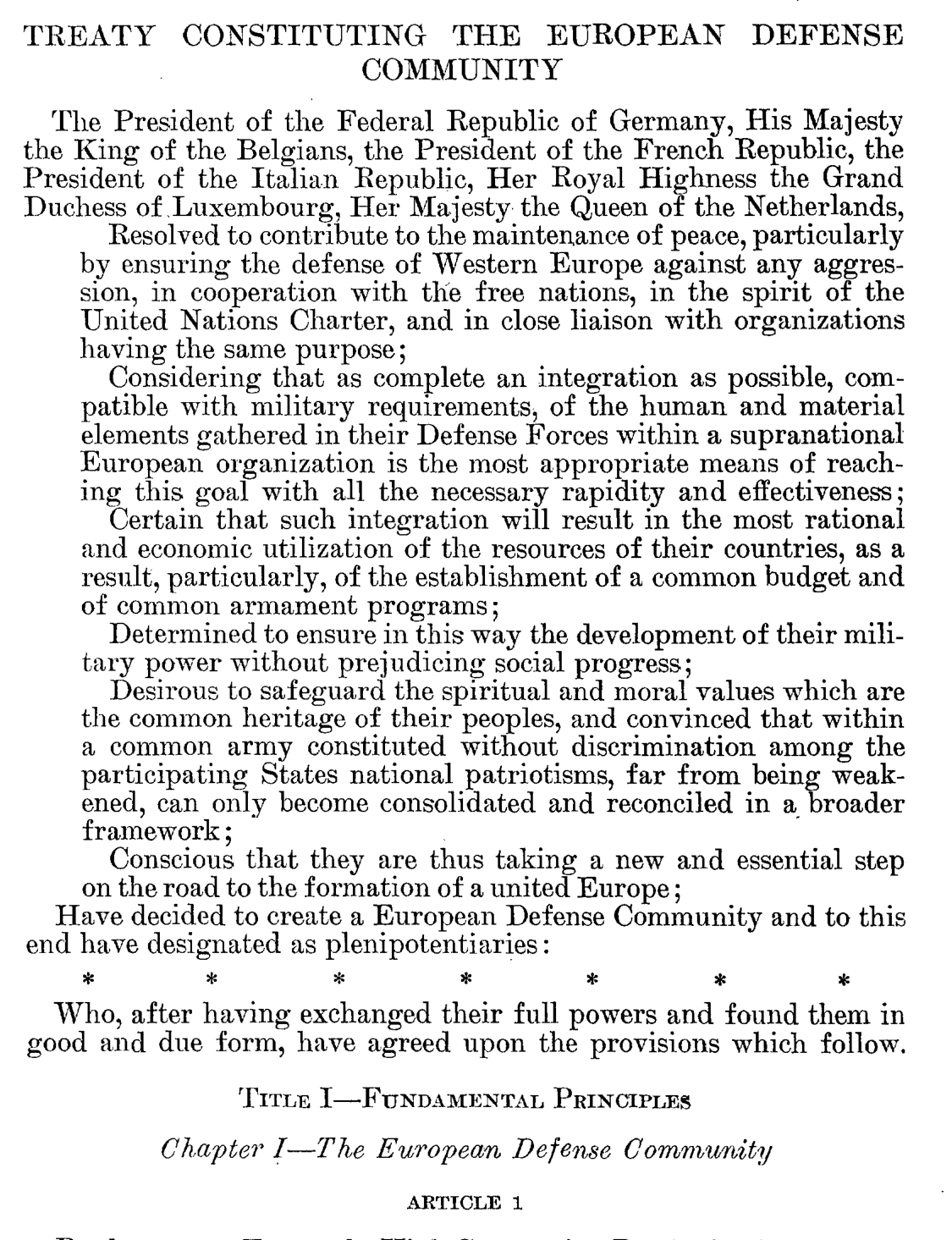
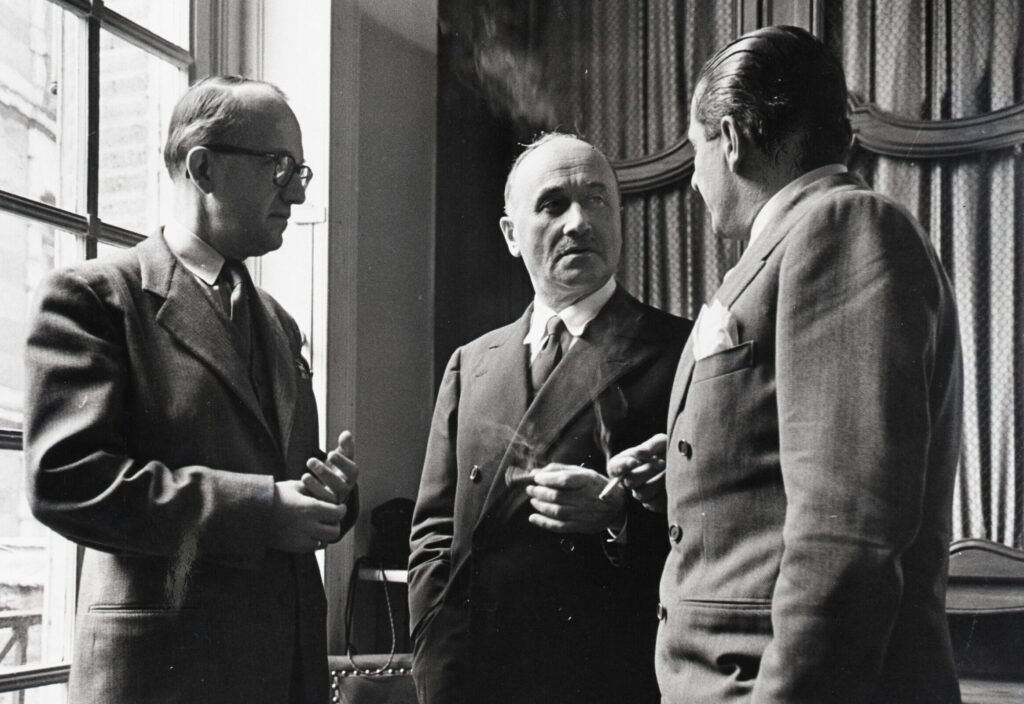
Copyright: European Communities, 1950
This idea originated already in the summer of 1950; Jean Monnet wanted to organize the European defense on a supranational basis, a natural consequence of the Schuman Plan and in agreement with the US suggestion of planning the re-armament of West Germany.
Suggestion… or demand? While the European public opinion was still facing the consequences of World War II, geopolitics was pushing for quick actions: the Soviet Union recently detonated the atomic bomb and the Korean War just began.
Monnet’s plan was to create a European army, with the eventual involvement of West-German units; and under a single military and political European authority.
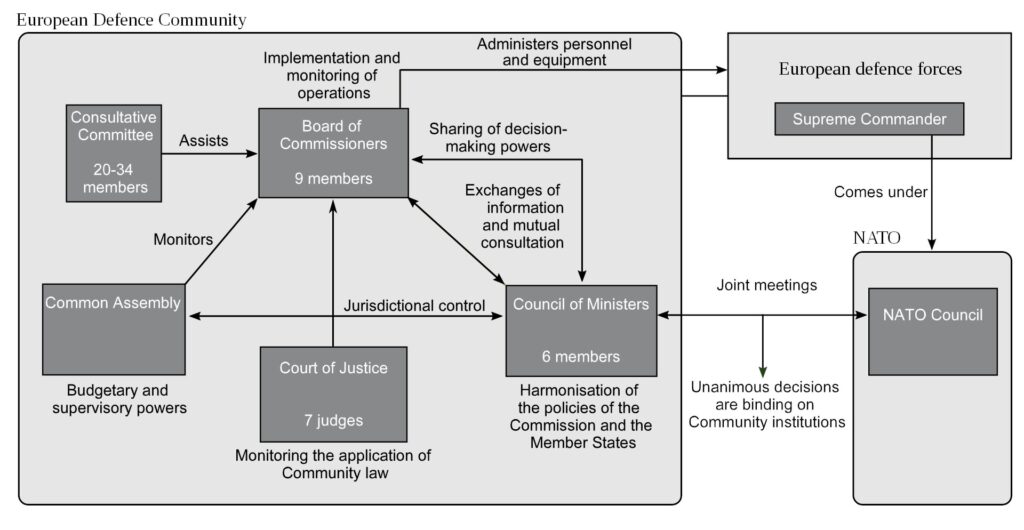
Copyright: Ssolbergj – Own work.
Wikimedia.
The idea reaches The Six
Jean Monnet presented the plan to the French Prime Minister René Pleven, who later submitted it to the French National Assembly.
“Confident as it is that Europe’s destiny lies in peace (…) the French Government proposes (…) the creation, for the purposes of common defense, of a European army”.
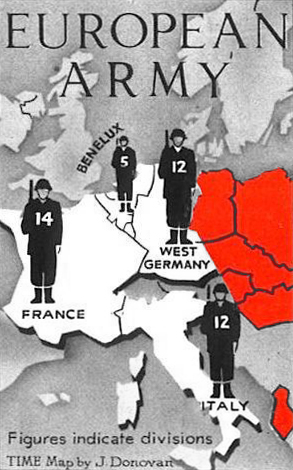
Copyright: Public Domain
The European Defense Community included West Germany, France, Italy, Belgium, the Netherlands and LuxembourgLuxembourg (abbr. LUX) is one of the funding members of the European Union, with a curious inverse relationship between its size and the cost of housing. Its considerable community of eurocrats is haunted by the constant feeling of being ignored by their colleagues in Brussels. Or the rest of the.... A draft agreement was ready in 1952; the six foreign ministers signed the Treaty of Paris establishing the EDC on 27 May, in the same place where the Schuman Plan (1950) was unveiled and the European Coal and Steel Community treaty (1951) was signed.
Not just that. Together with the Treaty of Paris, the six signed commitments to mutual assistance with NATO and a guarantee protocol with Great Britain.
Robert Schuman made a brief speech that day:
“An entity which may not be broken up. We submit for approval by all, in the light of day, this work of good faith and unprecedented innovation.
We do not intend to impose it: had we ever wanted to do so, our democratic institutions would have prevented us. But we would like the public in our countries to accept freely a daring concept, one which forms an intrinsic part of a constructive policy for peace”.
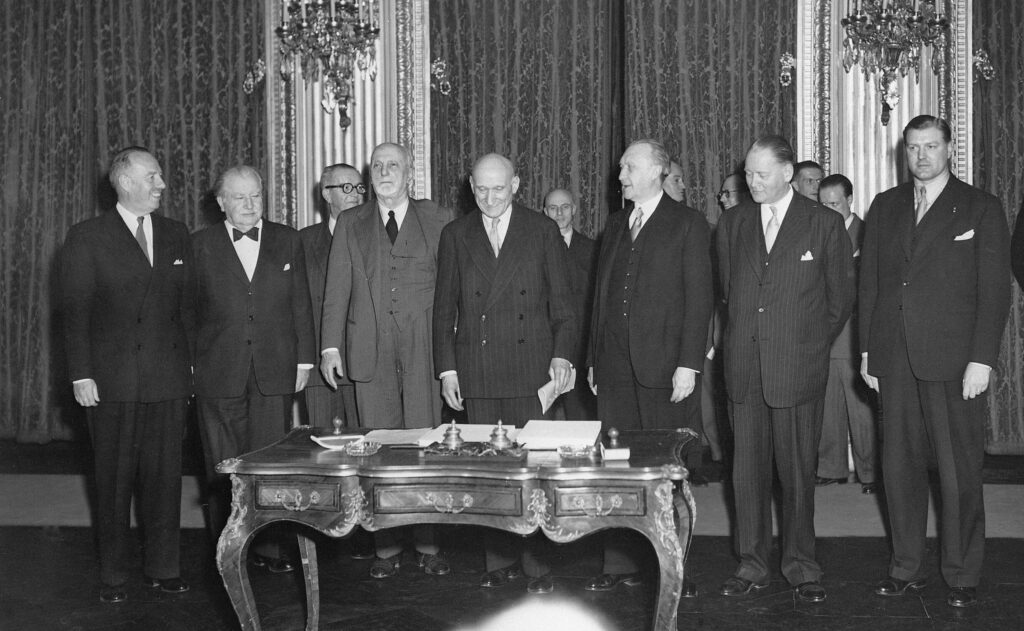
Quai d’Orsay, Paris.
Copyright: United States Special Representative in Europe (USA/SRE – Paris)
Treaty Interruptus
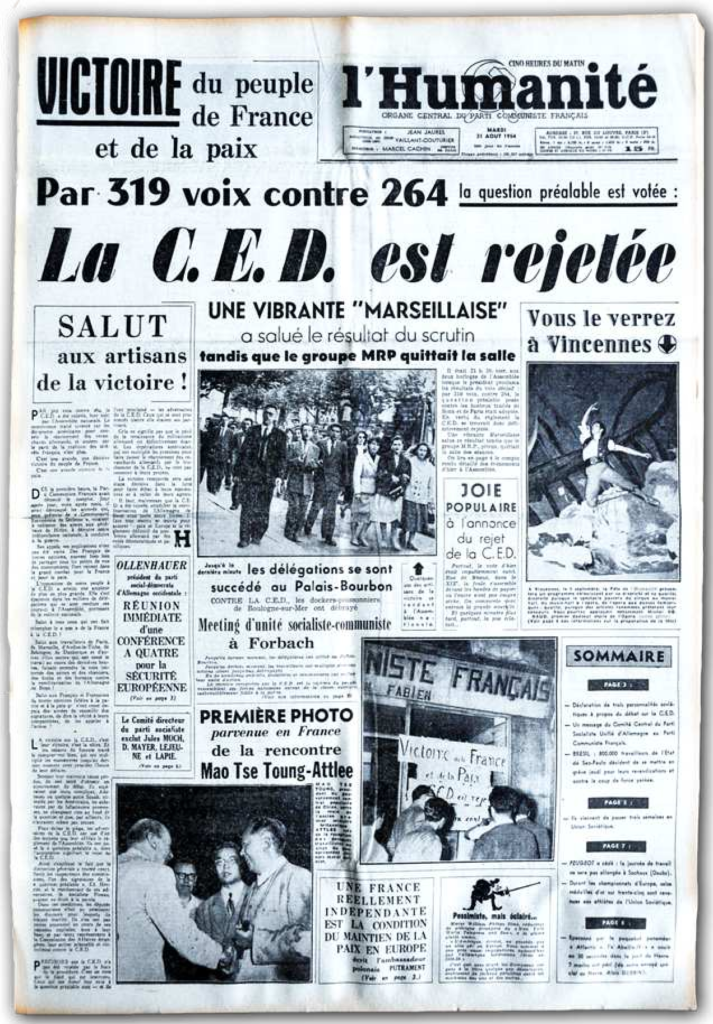
So everything was ready. The ratification could begin.
By 1954, one by one, all signatories ratified it… until the French National Assembly entered into scene: 319 votes against, 264 in favor. The plan was rejected. Italy, the only country left to ratify it, never proceeded in that direction.
Historians highlighted many reasons for the rejection: the death of Stalin reduced the concerns of a third world war; the French Assembly didn’t want to lose national sovereignty; people were worried about the new militarization of West Germany; the French Communists didn’t want to tie France to the capitalist US; The United Kingdom was left out of the agreement…

Whatever the reason, the plan was stopped and Monnet, who was the first President of the High Authority of the ECSC, decided to resign. With this letter:

The European Army defeats Monnet
The resignation took effect on Europe Day 1955. With a farewell speech for posterity.
“What we started, will continue. What we started is the United States of Europe (…) The prosperity of Europe depends on it. (…) The United States of Europe should not be limited to our six countries. The people of Europe need to understand the difference between the future and progress and the return to the past, to the war”
The treaty establishing the European Defence Community never came into effect. West Germany was admitted into NATO and the six member statesMember State (abbr. MS) is how eurocrats call a country which is part of the European Union. Clear writing guidelines recommend using EU country or EU countries instead, but some habits are hard to die.... started working on a common foreign policy.
So the EDC was put aside. A step towards the future US/USSR Détente? A missed opportunity? A road to walk again today? We’ll see. In any case, a historical attempt worth to be remembered.


